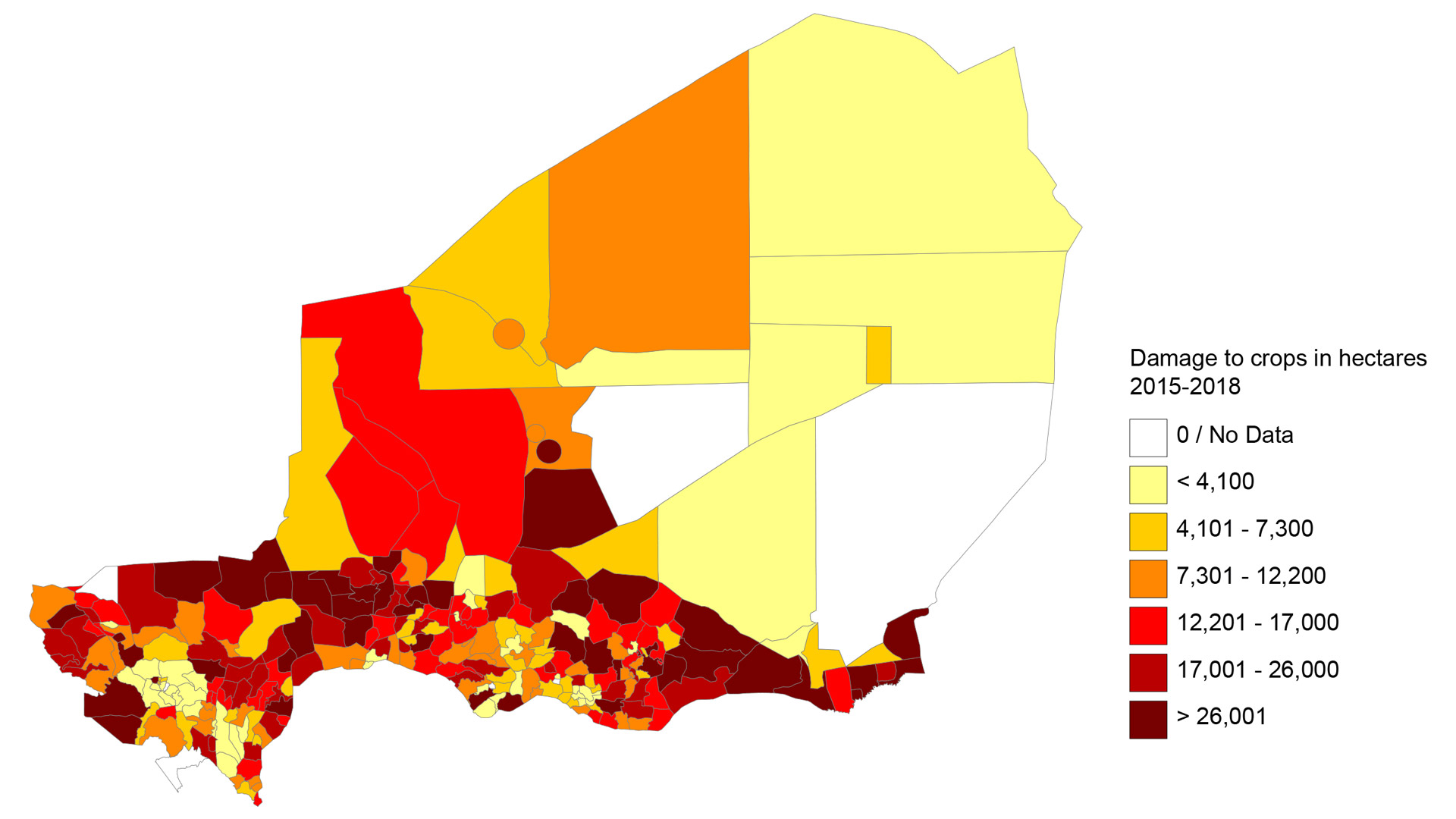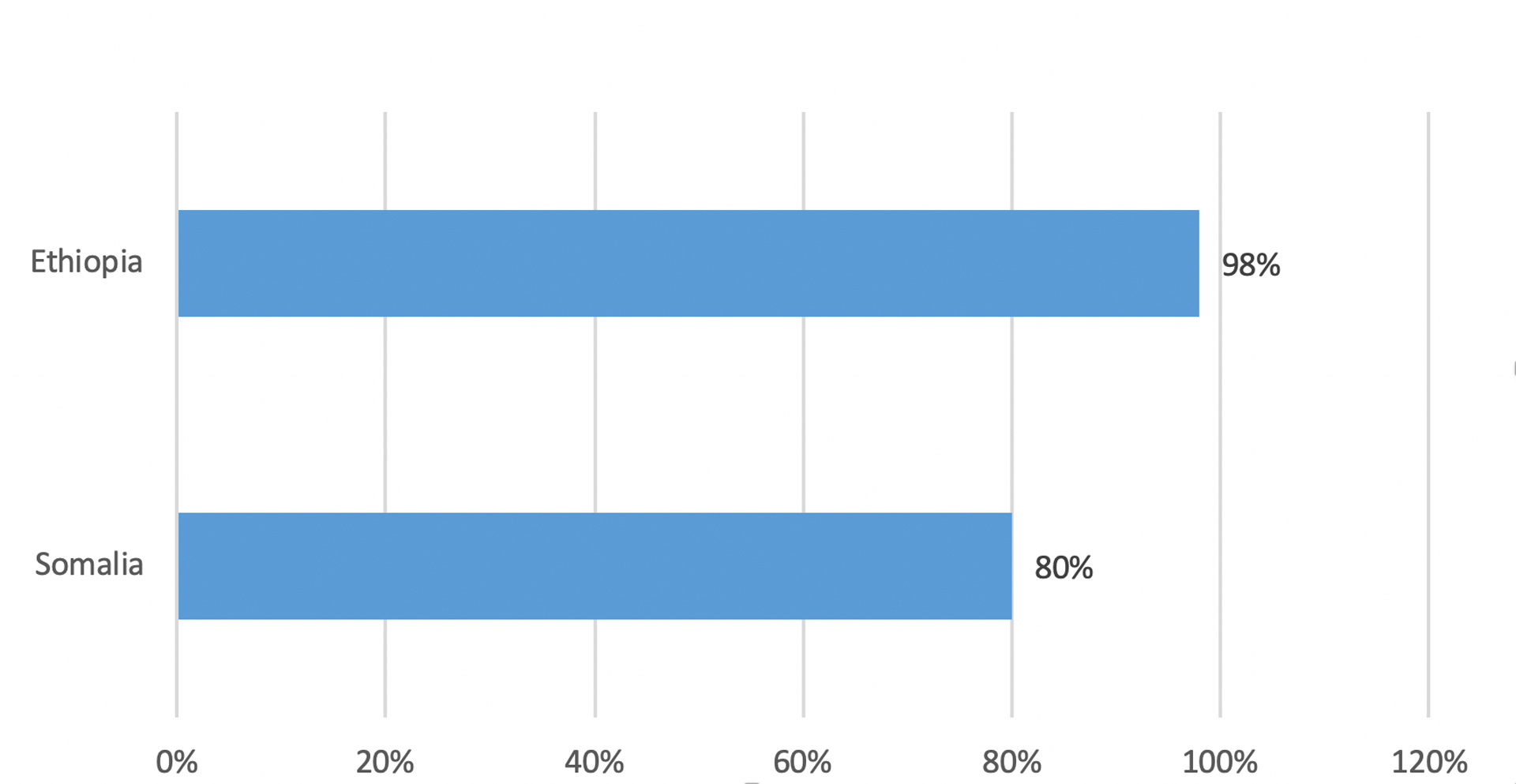Partner spotlight: Slow-onset environmental change and disasters
A partnership with Germany's Federal Foreign Office
The global number of people displaced by slow onset disasters remain unknown. Drought conditions were responsible for at least 760,000 new displacements during 2018. In this changing climate, July 2019 was the hottest month the planet has ever experienced, and experts predict that the year as a whole will be one of the five warmest ever. Displacement is set to continue so this partnership seeks to improve prevention and response, and propose durable solutions, by helping better understand the triggers, drivers and patterns of displacement associated with slow-onset events.
Objectives
- Understand the relationship between the drivers and impacts of displacement associated with drought.
- Provide a better understanding of conditions and priorities of displaced communities.
- Map available data for monitoring drought-related displacement, identify data gaps, and agree on a common analytical framework.
- Understand and identify the steps towards long-term solutions to support policy and programming.
How we worked

Despite the increasing scale of the phenomenon, drought displacement remains poorly understood and insufficiently reported on. With the support of Germany’s Federal Foreign Office, we carried out several data workshops and put together three case studies in Ethiopia, Niger and Somalia.
Together with local partners and consultants, we conducted 531 survey interviews with internally displaced people in Ethiopia (Somali region), Niger (Maradi region) and Somalia (Burco, Qardho and Galkayo). We complemented the survey findings with stories shared by research participants, additional gender-focused social cartographies and more than 60 key informant interviews with local, regional and national governments, as UN system representatives and NGO representatives.
We gathered all relevant partners in workshops in Ethiopia Niger and Somalia and mapped the currently available data on drought-related displacement. We used a system dynamics approach to identify how different phenomena are interlinked and contribute to drought displacement. Finally, we agreed on a common analytical framework to analyse the phenomena.
Findings
Drought is becoming more frequent and intense
The Horn of Africa is one of the most drought-prone regions in the world. Data in other parts of the continent is sometimes hard to come by. In Somalia, drought displaced almost one million people between 2015 and 2017. A further 425,000 people were displaced in Ethiopia, mostly in the Somali region. In Niger, the Ministère de l’Agriculture et de l’Elevage, through the UN Desinventar database was able to identify that more than 13 million hectares of land have been impacted by drought in the past 4 years (2015-2018).

Climate shocks are perceived to be increasing in frequency and intensity. 72% of all participants perceive a change in the climate (around 70% in Ethiopia, 73% in Somalia and 75.5% in Niger). The amount of rainfall has fallen, and the weather is much hotter.

Given the severity of the drought between 2015 and 2017 (the worst in living memory), the communities in Ethiopia's Somali region refer to the event as afgudhiuye, meaning “nothing to put in your mouth” and sima, meaning “equal” in Somalia, because the drought affected all people equally.
The impact of drought on livelihoods triggers displacement
Drought displacement is triggered when a critical threshold is reached, below which people are no longer able to make ends meet. Pastoralism can become unsustainable due to the loss of livestock. Vulnerable farmers, meanwhile, may have no option but to seek employment elsewhere to ensure the survival of their household. In Niger, they call this phenomenon "exodus".

Appetite for local integration is strong, but opportunities limited
98% of IDPs in Ethiopia and 80% in Somalia selected local integration as their durable solution of choice.

People displaced by drought are said to be in protracted displacement. Many end up stuck in this situation, with scarce opportunities for self-reliance and local integration. The regional and zonal authorities interviewed agreed that, in order to increase the sustainability of local integration, it is vital to boost the quantity, quality and access to basic public services in peri-urban host communities. The priority is to rehabilitate and construct basic water, health and education services, as well as infrastructure.
The desire to be integrated locally intermingles with the need for municipalities and states to increase return levels. The pressure that urban areas accumulate, make early solutions to displacement necessary to allow return to rural areas in effective conditions of security, dignity and sustainability. Loss of livestock and land also dissuades displaced communities from resuming their former semi-nomadic and sedentary lifestyle.
Durable solutions: the time is now
Long-term investment is needed to address drought displacement. Governments, UN agencies and NGOs that participated in this research stated that, “now is the time for action from donors to support existing partners and agencies with expertise in durable solutions.” Various bodies have welcomed the paradigm shift from funding specific projects, to financing consortia on durable solutions together with humanitarian and development actors. Investment in long-term, multi-year and multi-sectoral funding projects, both in rural and urban areas, emerges as a key factor.
Despite the great efforts that have been made through consortia and initiatives on durable solutions, there is a real need to decentralise efforts. Bringing them from the national to the municipal level also means intervening beyond those areas where international presence is abundant.
Durable solutions strategies need to be based on a long-term development approach to displacement, complementing short-term humanitarian needs. Addressing displacement triggered by drought in a way that goes beyond providing care and aid implies increasing livelihood recovery activities. In this sense, building local capacity is considered a protection strategy, which is at the heart of durable solutions initiatives. Participants in the research agreed that the resilience of livelihoods is a central consideration of durable solutions efforts and a fundamental demand of displaced affected communities.
Much data is already available, but not analysed
We discovered during the workshops and in all three countries that a lot data is readily available but not analysed in a common analytical framework. We found out that there is a strong appetite for this to be done and we are currently undertaking steps to design such a framework, which would be the focal point for all analysis related to drought displacement.
In order to bridge these data gaps, IDMC is working closely with government and UN agencies, local and international NGOs and farmers’ unions to develop a common understanding of the main indicators associated with drought displacement, and a model that would explain some of the triggers, dynamics and interactions between the indicators.
Amina's story

“We had 30 camels, 25 cows and 100 goats and sheep. By the day we came here, we only had eight goats left”, remembered Amina, 40, from the shade that trees give her next to her provisional shelter in Gafow IDP site.
Amina left Kaam Yaxye village, a four-hour walk from Gafow, one year and a half ago due to the drought. “We want to stay here, even with animals; we don’t have plans to move”. The desire to stabilise her life in Warder, a small town near Gafow IDP site, clashes with the imperative to find a way of life.
What next?
IDMC is committed to continuing its work on monitoring drought displacement through collaboration with governments and partners in Ethiopia, Niger and Somalia, as well as increasing research. This is demonstrated by the agreement between IDMC and the Ethiopia Durable Solutions Initiative and the close collaboration with the stakeholders involved in the Somalia Durable Solutions Initiative.
In all three countries, IDMC will seek to engage with the partners to develop a common framework of analysis and continue to work closely with participants in the workshops to better understand what is needed to populate the drought displacement data model. We envision a more robust, coordinated and data-driven process of collection and verification, which should then enable us to monitor displacement associated with drought in Niger, Somalia and Ethiopia.
IDMC will also continue its work with its partners in the three countries to develop a common analytical framework, using a system dynamics approach, in order to gather and analyse all relevant data. In the longer term, this framework should also allow us to forecast future displacement, as well as the needs associated with and the impact of different responses.